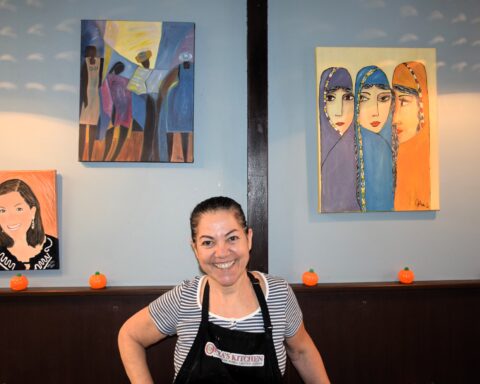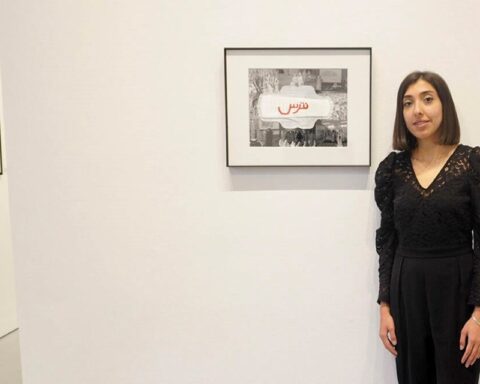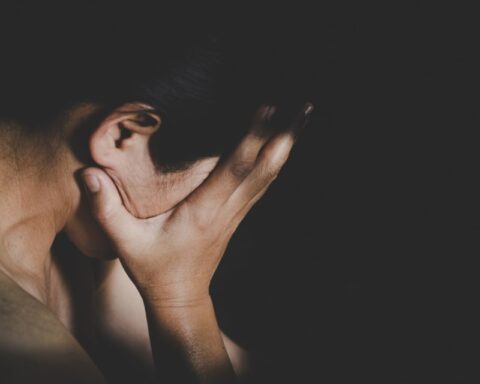“You can’t be what you can’t see.” — Marian Wright Edelman, human rights activist
I can’t begin to imagine life as a teenage girl nowadays. Just turn on the television, check out Facebook, stand at a bus station, or take a walk in a mall.
The countless images bombarding all of us highlight artificial standards of female beauty. Studies show that these images are negatively affecting how young women and girls perceive themselves.
In fact, there is a significant body of research which explores how hyper-sexualized and degrading portrayals of the female form are limiting the way in which young women and girls feel comfortable participating in their classrooms, schools, and ultimately, in their communities.
For example, experts in an award-winning documentary film called Miss Representation draw a direct correlation between a culture which judges women based on physical appearance and unattainable ideals of beauty and the dismal representation of women in politics.
So if young women and girls can’t find role models within the pages of typical teen magazines, or in most mainstream books and film, then where can they find them? The answer should be, within their communities.
That realization begs this critical question: how effective are various ethnic and religious communities in encouraging and lending profile to women who are successfully participating within the wider society?
Sharing a platform
My observation as a Canadian Muslim woman is that few women in our community are given a platform to share and speak about their knowledge and experiences. On the flip side, young men and boys do not have to look far to find men of all ages standing up and speaking to them with authority and offering guidance.
Just take a look at most North American Muslim conferences. How many women are on stage? From Chicago to Toronto to Ottawa, the answer is, very few. This is not for a lack of successful women leaders in our communities. We have Canadian Muslim women who are doctors, scientists, academics, educators, lawyers, engineers, filmmakers, authors, journalists, activists, editors, entrepreneurs, etc. But for some reason, our community seems unwilling to showcase their talents. Just last year, after praising the success of the Reviving the Islamic Spirit conference which attracts over 20,000 people annually, the well-known American academic, author, and consultant, Dalia Mogahed, nevertheless lamented the dearth of female speakers. Mogahed is one of just over a handful of women who have ever spoken at this immense gathering, now in its 13th year.
What is behind this? Surely, young women and girls deserve to hear from women who are paving the way forward. And, certainly, women were not invisible in Islam’s earliest days as a pioneering faith that recognized gender rights and women’s agency. Why then are our communities today so reluctant in acknowledging and spotlighting female achievements?
Barriers in mosques
There seems to be a disconnect, or, more specifically, confusion around the role of Muslim women in society. There is a deep and ingrained cultural fear about intermingling. That fear is so strong that it has essentially led to the erasure of the female presence from many community institutions. Take the barriers that have popped up at mosques across North America over the past few decades, making many women feel unwelcome and apart, as chronicled in the 2005 Canadian film Me And the Mosque. While some Muslim women themselves have internalized concerns over intermingling, so much that they cling to the barriers, the fact is that these barriers have come to represent an unwillingness to model respectful interactions between the genders. This emerges out of misplaced concepts of modesty and piety and is perhaps the attitude that led a York University student to famously ask to be exempted from working with female peers.
The attempt to erase the female presence was even more sharply highlighted in the recent response to a viral video of British Muslims singing and dancing to a popular song called “Happy,” (I’m told a Canadian version is on the way). The participants in the video were comfortable enough to take part and show that Muslims can have fun too, contrary to the popular discourse that frames the community as inherently violent and dangerous.
Not only were the participants vilified by a small and vocal minority, but someone went as far as to edit out most of the women, even those who weren’t dancing, in order to make the video acceptable to certain tastes.
Popular culture
In other words, there are those who would rob young Muslim women and girls of the rare opportunity to see themselves represented in popular culture. Those who feel the video is impermissible on religious grounds, by all means, tune out. But to think that teenagers aren’t already exposed to much more in today’s zeitgeist is to remain blissfully unaware. Why not offer images that reflect the diversity of the female Muslim population?
If we do not start teaching by example as well as acknowledging their presence and experiences, we run the risk of raising a generation of girls who are unsure of their place in their communities.
They must be able to see their mothers, aunts, older sisters, friends and neighbours playing meaningful roles in their own communities – as board members, community organizers, speakers at conferences and workshops, and participants in various media. And they must know that one day, it will be their turn.
As women of various backgrounds and professions will attest, inadequate female representation isn’t solely a Muslim phenomenon. Solutions will have to emerge from within each particular community.
Amira Elghawaby is a journalist and human rights advocate based in Ottawa. Follow her on Twitter @AmiraElghawaby
Amira Elghawaby is an award-winning journalist and human rights advocate. Along with frequent appearances on Canadian and international news networks, Amira has written and produced stories and commentary for CBC Radio, the Ottawa Citizen, the Literary Review of Canada, and the Globe and Mail. She is currently a freelance contributing columnist for the Toronto Star.





